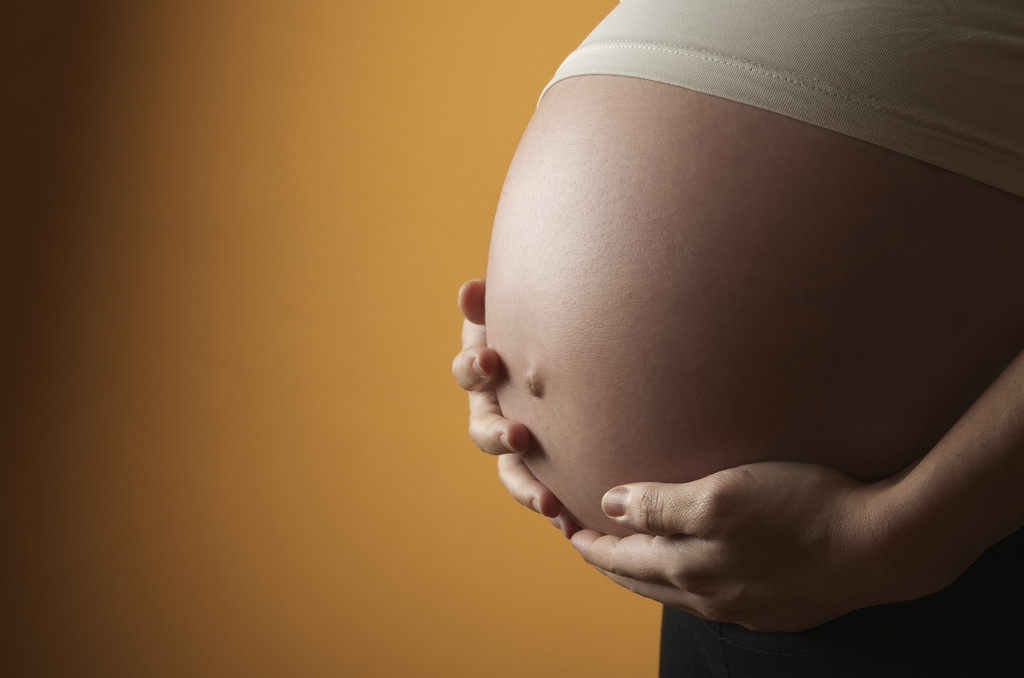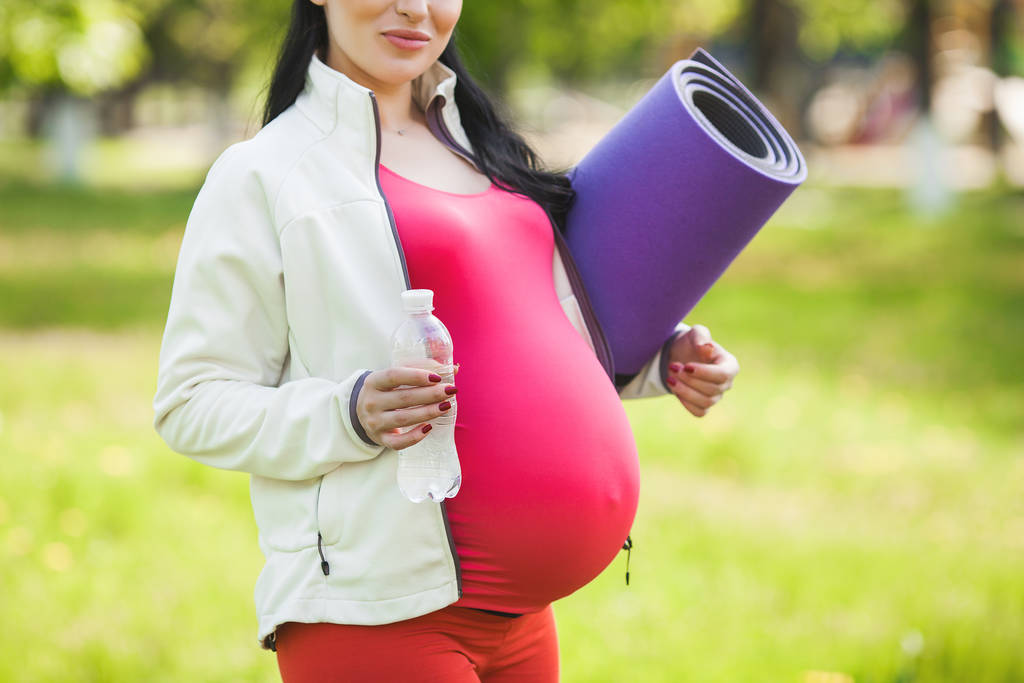Discover how pregnancy alters the body’s center of gravity and impacts posture.
How Pregnancy Changes the Body’s Center of Gravity and Affects Posture
During pregnancy, a woman goes through numerous changes both physically and emotionally. One of the most noticeable transformations occurs in the body’s center of gravity. Understanding how pregnancy alters this balance point is crucial to comprehending the impact it has on posture. Let’s unravel the fascinating journey of pregnancy and its effects on our body mechanics.

Understanding the Concept of Center of Gravity
The center of gravity (COG) is like the star quarterback of body mechanics. It’s the point where the body’s mass is evenly distributed, allowing us to maintain stability and perform everyday activities effortlessly. A well-balanced COG ensures smooth movements and prevents falls. Normally, the COG is located near the navel, providing a stable foundation for our entire body to rely on.
The Role of Center of Gravity in Body Mechanics
Think of your body as a finely tuned machine. The center of gravity acts as the fulcrum upon which all movements depend. It helps you walk, run, dance—whatever your heart desires! Maintaining stability and balance is the COG’s superpower, ensuring all body parts work in harmony. So, when the COG shifts, everything gets a little wobbly.
Imagine yourself walking on a tightrope. Your COG is constantly adjusting to keep you from falling off. As you take each step, your body instinctively shifts its COG to maintain balance. This constant readjustment is what allows you to move gracefully and effortlessly.
Additionally, the COG plays a crucial role in sports and physical activities. Athletes rely on their COG to generate power and maintain control. Whether it’s a basketball player dribbling the ball or a gymnast performing a routine on the balance beam, the COG is at the heart of their movements.
How Pregnancy Alters the Center of Gravity
Pregnancy is a magical journey, but it certainly leaves its mark on the COG. As the baby grows, the mother’s body undergoes significant changes to accommodate the pregnancy. With the added weight of the baby, the COG starts to shift forward. This places extra strain on the lower back, pelvis, and legs, potentially affecting the mother’s overall posture.
With the shifting COG, the body’s center of balance changes too. Pregnant women often find themselves leaning backward to counterbalance the extra weight in front. This adjustment may cause a swayback posture that changes their way of walking and standing. It’s like doing the pregnancy shuffle!
During pregnancy, the body’s ligaments also become more relaxed due to hormonal changes. This can further affect the COG, as the joints become looser and less stable. As a result, pregnant women may experience a greater need to focus on maintaining their balance and stability.
Despite these changes, the body is incredibly adaptable. The muscles surrounding the COG work hard to support the shifting weight and maintain stability. The body’s natural instincts kick in to ensure the safety and well-being of both the mother and the baby.
Understanding the alterations in the COG during pregnancy is essential for healthcare professionals and expecting mothers alike. By recognizing the impact of these changes, healthcare providers can offer appropriate guidance and support to help women navigate the physical challenges of pregnancy.
The Impact of Pregnancy on Posture
It’s no secret that pregnancy can transform even the most graceful gazelle into a waddling penguin. Postural changes become an inevitable part of the journey, but understanding their stages and long-term effects is essential to support a mother’s physical well-being.
During pregnancy, a woman’s body undergoes remarkable changes to accommodate the growing life within. These changes not only affect the internal organs but also have a significant impact on posture. The body, in all its wisdom, adjusts itself to create a safe and nurturing environment for the developing baby.
The Stages of Postural Changes During Pregnancy
Pregnancy is a fascinating journey filled with surprises, and postural changes definitely make the list. As the baby develops, a woman’s center of gravity gradually shifts forward, leading to a change in posture. During the first trimester, there’s minimal impact on posture, but as the baby grows, the shift becomes more pronounced. By the second trimester, the body starts to adapt to the changes, and the mother may notice a slight curvature in her lower back.
As the pregnancy progresses into the third trimester, that adorable baby bump can quickly throw off balance, affecting how a mother stands, walks, and even sits. The body compensates for the extra weight by adopting a typical pregnant “S” shape, with the lower back curving inward and the shoulders rolling forward. This posture helps distribute the weight more evenly and reduces strain on the spine.
From the typical pregnant “S” shape to the lower back curve, the body adapts to handle the extra weight. It’s like Mother Nature providing her own unique yoga class, challenging the body to find equilibrium in every new stage.
Long-term Postural Effects of Pregnancy
Just like a tattoo, pregnancy leaves a lasting mark on a woman’s body in the form of long-term postural changes. The added weight during pregnancy and the prolonged adaptation process can cause muscle imbalances and weakness, leading to persistent postural challenges even after giving birth.
Many women experience discomfort in the lower back and pelvis due to the strain caused by the shifted center of gravity. The muscles in the abdomen and pelvic floor also undergo significant changes during pregnancy, which can further contribute to postural imbalances. It is important for women to be aware of these long-term effects and take proactive steps to address them.
Regular exercise, particularly focused on strengthening the core and back muscles, can help alleviate postural issues and improve overall posture. Physical therapy and chiropractic care are also valuable resources for pregnant women and new mothers seeking to restore their body’s alignment and function.
Additionally, practicing good posture habits throughout pregnancy and beyond can make a significant difference. Simple adjustments, such as sitting up straight, using supportive pillows while sleeping, and avoiding prolonged periods of standing or sitting, can help minimize the strain on the body.
Therefore, it’s crucial to be mindful of the body’s changing needs and address any long-term postural effects for a healthier future. By understanding and actively managing these changes, women can navigate the transformative journey of pregnancy with grace and minimize the impact on their overall well-being.
The Interplay Between Center of Gravity and Posture in Pregnancy
Imagine the COG and posture like best friends forever (BFFs). They rely on each other to balance the body and maintain stability. Throughout pregnancy, this dynamic duo encounters new obstacles together, but with some adjustments, it’s possible to keep them on the same page.
Balancing Challenges During Pregnancy
As the COG shifts during pregnancy, finding balance can feel like mastering a tightrope act. But fear not, pregnant warriors! There are ways to overcome these challenges and maintain stability. Engaging in exercises that promote core strength can help support the shifting COG and improve overall posture. Just be sure to consult with a healthcare professional before introducing any new exercise routine during pregnancy.
Postural Adjustments to Compensate for Shifted Center of Gravity
When life throws you a shifted COG, it’s time to adapt! Pregnant women often make subconscious postural adjustments to compensate for the change. They may lean backward or sway their hips to find their new center of balance. It’s like becoming a master of postural ninja moves! However, being mindful of these changes is crucial to prevent excessive strain and discomfort.
Using props, such as pillows or a lumbar roll, can provide additional support and help maintain a comfortable posture. Remember, it’s all about finding the perfect balance—both literally and figuratively!
Health Implications of Postural Changes in Pregnancy
Postural changes during pregnancy not only impact comfort but can also have implications for a mother’s overall health. Understanding these potential effects can empower women to take proactive measures for a healthier and more enjoyable pregnancy journey.
Back Pain and Other Musculoskeletal Issues
Ah, the joys of pregnancy! As the center of gravity shifts, the lower back often takes the hit and becomes a hotspot for discomfort. The strain on the back muscles can lead to nagging back pain that accompanies pregnant women like their own little sidekick.
In addition to back pain, other musculoskeletal issues can arise, including pelvic discomfort, hip pain, and muscle tension. It’s like a mini obstacle course, but with the right strategies, the finish line is within reach!
Circulatory and Respiratory Effects of Postural Changes
Posture isn’t just about standing tall; it also affects our body’s internal systems. Incorrect posture during pregnancy can put pressure on blood vessels, potentially disrupting circulation. This can lead to swelling of the legs and ankles, making one look like they’ve been moonlighting as a balloon artist.
Furthermore, poor posture may impact the respiratory system, limiting the expansion of the lungs and reducing oxygen intake. A gentle reminder to take deep breaths: not just for you but also for your little bun in the oven.
Ways to Manage Posture and Balance During Pregnancy
While pregnancy may bring its fair share of challenges, there are ways to manage posture, improve balance, and ease the burden on the body. Let’s explore some strategies to keep both the center of gravity and posture in tip-top shape!

Safe Exercise Practices for Pregnant Women
Exercising during pregnancy can be fun and beneficial when done correctly. Engaging in low-impact activities, such as walking or swimming, helps strengthen muscles and promotes better posture. Prenatal yoga or specialized pregnancy exercise classes can also provide guidance on maintaining proper alignment and accommodating the changing body.
It’s important to listen to your body, don’t overdo it, and always consult with a healthcare professional before starting any exercise routine during pregnancy, because let’s face it—pregnancy is already enough of a workout!
Importance of Proper Footwear and Body Mechanics
Footwear may not be the first thing that comes to mind when thinking of posture, but trust us, it’s a game-changer! Wearing supportive and comfortable shoes can help maintain proper alignment and distribute the body’s weight evenly.
Additionally, paying attention to body mechanics—such as good posture while sitting, standing, and lifting—can alleviate unnecessary strain on the body. Remember, you’re a superhero growing a tiny human, so embrace your powers and move with grace!
In Conclusion
Oh, the wonders of pregnancy! The journey brings amazing changes both inside and outside the body. Understanding how pregnancy impacts the body’s center of gravity and influences posture can help expectant mothers navigate this beautiful voyage with grace.
While the shifting center of gravity may put our postural superhero skills to the test, embracing strategies to manage posture and balance during pregnancy can keep us feeling strong and confident. Remember, it’s all about finding the perfect harmony between our center of gravity and posture, ensuring a happy, healthy, and playful pregnancy experience.



